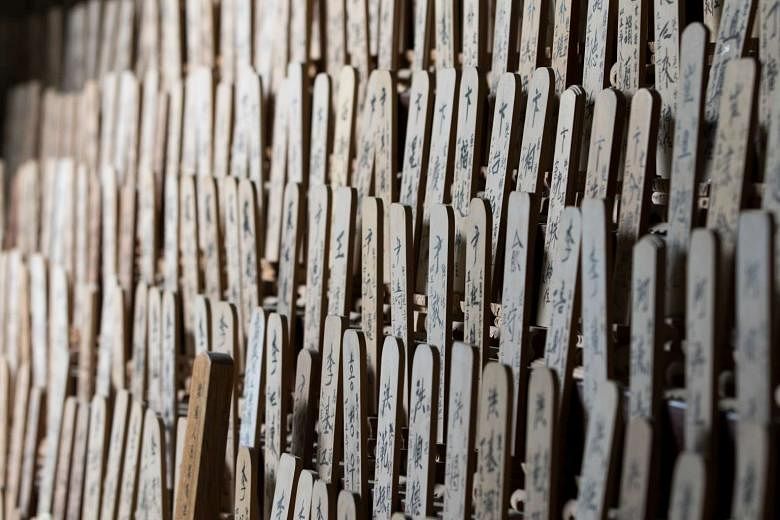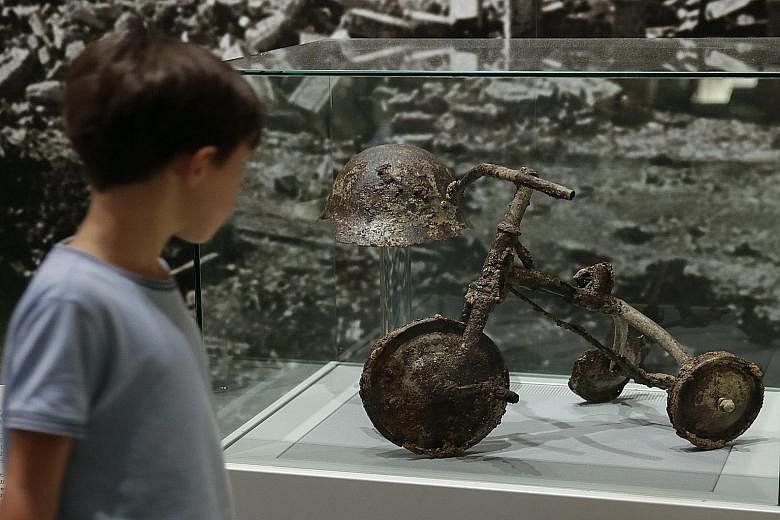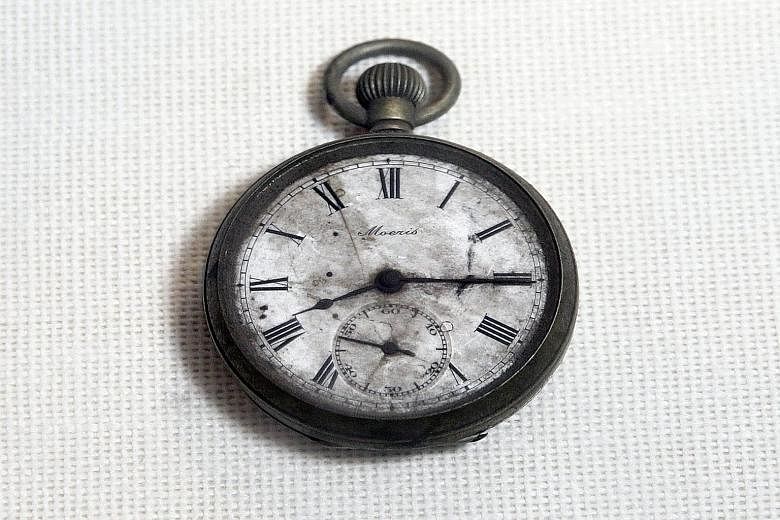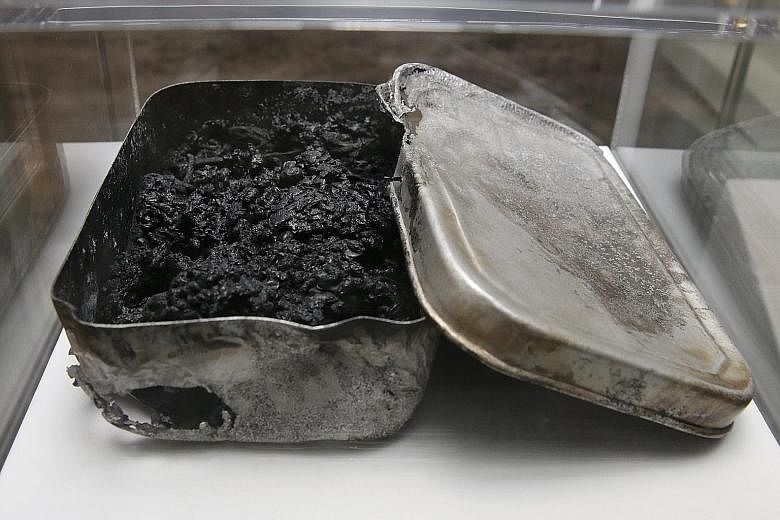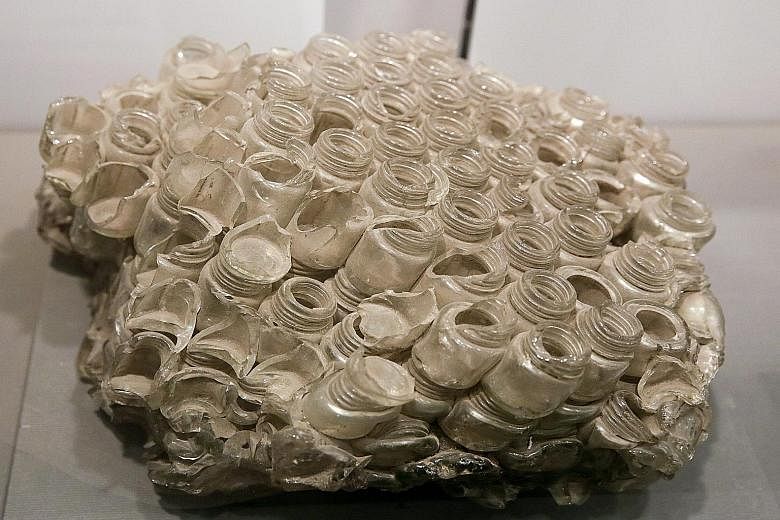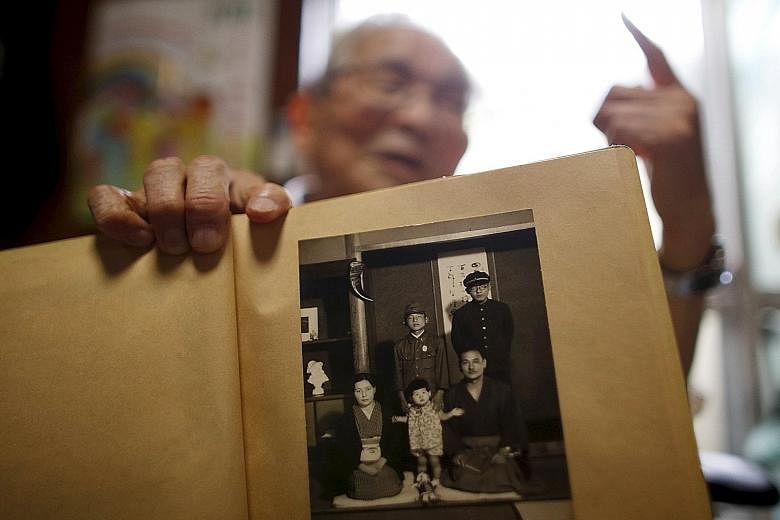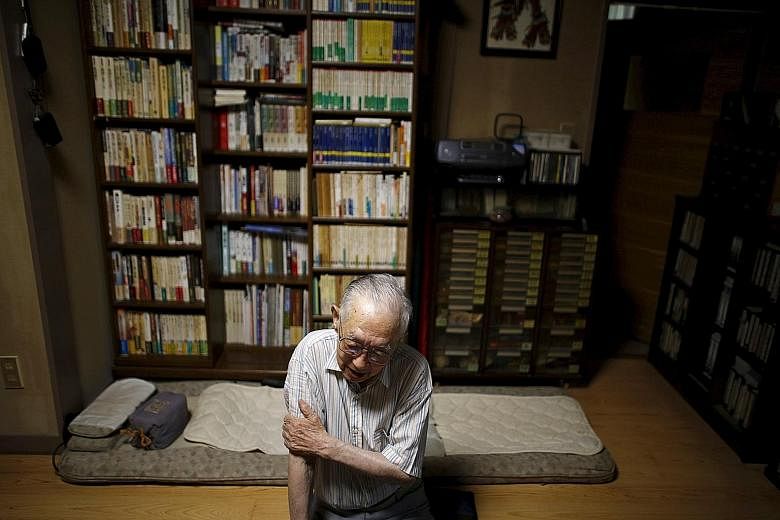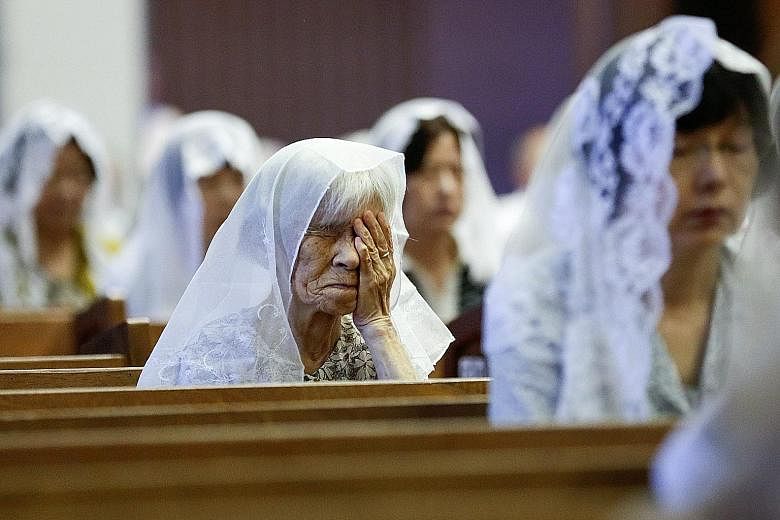NAGASAKI • The "father of the atomic bomb", physicist Robert Oppenheimer, famously quoted Hindu scripture after the first test of the device that was to be dropped on Hiroshima and Nagasaki in August 1945: "Now I am become Death, the destroyer of worlds."
This past week saw the commemoration of the day Death arrived 70 years ago, incinerating the two Japanese cities.
Nagasaki on Sunday marked the 70th anniversary of the death and destruction wrought by the bomb nicknamed "Fat Man". It claimed more than 74,000 lives. Three days earlier, the first atomic bomb to be used in war, "Little Boy", had killed 140,000 people in Hiroshima.
Both cities are now shrines to peace, Nagasaki a prosperous port of half a million people, and Hiroshima, equally thriving, with three times that population.
Each year, the anniversaries are marked by general declarations of peace and calls to end nuclear weapons proliferation. But this year's ceremonies have drawn attention to two very current matters of concern: the fears of a revival of militarism via Prime Minister Shinzo Abe's move to revise Japan's pacifist Constitution and a return to the use of nuclear energy.
In Hiroshima last Thursday, small groups of demonstrators gathered to protest against moves to pare back post-World War II curbs on the military and to restart nuclear power plants idled after meltdowns at a plant in Fukushima in 2011.
Mr Kohei Oiwa, an 83-year-old bombing survivor, sat silently through Mr Abe's speech at the remembrance ceremony but criticised him bluntly afterwards.
He condemned the legislation before Parliament that would allow Japanese forces to fight overseas, in limited situations, for the first time since World War II. And he criticised as hypocritical the Tokyo government's pledges to help rid the world of nuclear arms.
Nagasaki survivor Sumiteru Taniguchi, a frail 86, also worries about the consequences of Mr Abe's actions, saying: "The security Bills which the government is trying to push through would jeopardise our long-time movement for nuclear abolition and hopes of hibakusha (atom-bomb survivors). I cannot tolerate the Bills."
Nagasaki Mayor Tomihisa Taue criticised the government in the presence of Mr Abe at the commemoration on Sunday. "Worries and anxieties are spreading among us that this pledge made 70 years ago and the principle for peace in the Japanese Constitution may be now undermined," he said to applause.
Mr Kazumi Matsui, Hiroshima's mayor, voiced similar sentiments.
Such misgivings are widely shared by the survivors of the nuclear attacks. There are close to 200,000 officially recognised survivors of the Hiroshima and Nagasaki bombings, but their average age is over 80, and their number and influence dwindling.
Now as Mr Abe prepares to mark this week the 70th anniversary of Japan's World War II surrender on Aug 15, his remarks will be closely scrutinised by many Japanese and many of the country's neighbours. China and Korea will be waiting for any trace of an apology for Japan's militarism in the 20th century.
But Mr Abe has repeatedly talked of the need for what he calls a "forward-looking attitude" that concentrates on the positive role Japan has played - and still plays - in Asia since its 1945 surrender. He told reporters in Hiroshima last Thursday that as the only country to have experienced nuclear bombs, Japan has a special duty to work towards a world free of nuclear weapons.
In the nervous aftermath of those atomic bombings, the world spent decades on alert for a nuclear war that would wipe out billions in a radioactive firestorm.
"It is pretty clear that mutually assured destruction has contributed to the absence of global war for the r Mark Fitzpatrick, a nuclear security expert at the International Institute for Strategic Studies.
Still, growing global instability - the renewed rift between Russia and the West, simmering tensions between India and Pakistan, a drive by China to modernise its nuclear forces and an ever-more-bellicose North Korea - has undermined efforts to reduce nuclear weapons and keep doomsday at bay.
Nine nations - Britain, China, France, India, Israel, North Korea, Pakistan, Russia, the US - possess some 16,300 nuclear weapons, according to the Stockholm International Peace Research Institute.
Mr Fitzpatrick said "it is quite thinkable that there would be a smaller-scale nuclear war involving some of the other countries that are nuclear armed", the most likely being between India and Pakistan.
Other risks for nuclear conflict are the accidental releasing of a bomb, or the "significant possibility" that "a group of six terrorists with the right knowledge could put a bomb together", he added.
Mr Steven Starr of the Nuclear Age Peace Foundation said: "It is a miracle the human race has managed to escape the final nuclear war."
But he added: "Don't count on us making it another 70 years."
REUTERS, NEW YORK TIMES, AGENCE FRANCE-PRESSE

1. THE BOMBS
- On Aug 6, 1945, the US B-29 bomber Enola Gay released a bomb nicknamed "Little Boy" by parachute over Hiroshima. The 4,400kg uranium-235 device exploded 1,900ft above the ground with an energy of 15 kilotons of TNT.
- On Aug 9, "Fat Man" was dropped on Nagasaki. It was a plutonium-239 bomb weighing 4,670kg, built to create a nuclear chain reaction producing a 22-kiloton blast.
2. THE TARGETS
The original target city of the second bomb, which was dropped on Aug 9, was Kokura. But it was obscured by cloud so the bomb was dropped on nearby Nagasaki, an alternative after Kyoto was removed from the list because of its religious significance.
3. THE SURVIVORS
Atomic bomb survivors are known as hibakusha or "bomb-affected people". The Atomic Bomb Survivors Relief Law recognises them as: people exposed directly and to its immediate aftermath; people exposed within a 2km radius who entered the sphere of destruction within two weeks of the explosion; people exposed to radioactive fallout generally; those exposed in utero, whose mothers were pregnant and contaminated in any of these defined categories.
4. DOUBLE VICTIMS
At least 160 people are believed to have been affected by both bombs. Tsutomu Yamaguchi is the only one officially recognised as a double survivor. He was in Hiroshima on business when it was bombed on Aug 6, 1945, but went home to Nagasaki the next day despite burns, eye and ear injuries. He was at work there on Aug 9 when the second bomb exploded. He died in 2009, aged 93.
Sources: IB times, The Independent, Hibakusha Stories, BBC




